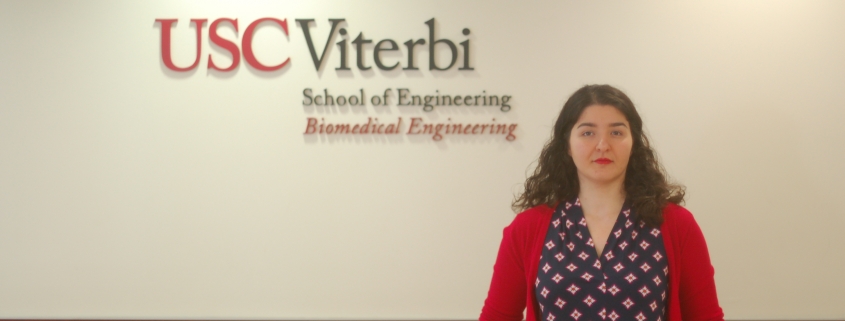Viterbi professor seeks accessibility in medical field

(Ada Toydemir | Daily Trojan)
23andMe, an at-home genetic testing service, was founded just 13 years ago. At the time, the idea of spitting into a tube, sending it off to a lab and receiving an in-depth analysis of the corresponding DNA sequence — all for a little over $100 — was unthinkable. However, researchers at USC are pioneering a wide variety of clinical tests that are more accessible and affordable.
Viterbi School of Engineering assistant professor Maral Mousavi is currently researching affordable at-home tests with unconventional materials such as yarn and paper.
Her project, which she has been working on since completing her postdoctorate at Harvard University a few years ago, has been dubbed “MAD Lab,” or the Laboratory for Design of Medical and Analytical Devices.
“In a way, it’s something that is accessible to all,” Mousavi said. “You don’t have to pay hundreds of dollars to get a sheet of paper.”
Mousavi said expensive clinical tests can pose significant financial barriers to individuals who are unable to afford the medical care they need. One of the advantages of using simple materials is that they are “microfluidic devices,” capable of easily transferring solutions.
One of Mousavi’s doctoral students, Victor Ong, said using paper and yarn to deliver accurate medical tests could be cost effective and make medical assistance more accessible for individuals across socioeconomic statuses. Ong also said it is more affordable for the developer.
“You don’t have to spend a lot of money or time to develop tiny silicone channels that might be 10, 15 microns in width,” Ong said. “You can just take a piece of thread, which is already there and sort of use that to transport your liquid instead.”
Mousavi said that in recent years, the cost of healthcare and medical expenses are at all-time highs and that her lab is working toward cutting down on the overall cost and time that healthcare requires.
“We don’t need a lot of complicated pipetting,” she said. “We want to eliminate these expensive clinical analyzers that would cost 50k and above.”
Her ultimate goal for this research is a simple system that could be made inexpensively and “hopefully [be] coupled with your smartphone.”
Mousavi and her team of USC researchers are also working on a device that individuals with chronic kidney disease could use. With inexpensive technology that could detect electrolytes in blood obtained from a finger prick, she said patients could monitor their diseases more frequently at a lower cost from the comfort of their home. She hopes patients can monitor the efficacy of the medication they are taking.
Mousavi is also passionate about opening research positions to undergraduate students interested in pioneering devices in the medical field. Lydia Cardwell, a freshman majoring in biomedical engineering, said her interest in Mousavi’s work stems from a passion for accessibility and equality within technology fields.
“I believe we have so many problems with the health care system in the U.S., and at a certain point, we’ve kind of been trying to solve this problem just by having more doctors, having more of the same kind of strategy,” Cardwell said. “As an engineer, we can uniquely provide solutions for the problems in our health care system.”
Although the lab is still in its early planning and developing stages, Mousavi hopes to push for accessibility within her field of research and invites students to work on projects with MAD Lab.
“She is a young professor, she’s new, but she asks you how your weekends go, she cares about what the undergrads think,” Ong said. “She takes our opinions into account and we talk through things. That’s been a huge blessing to me.”

